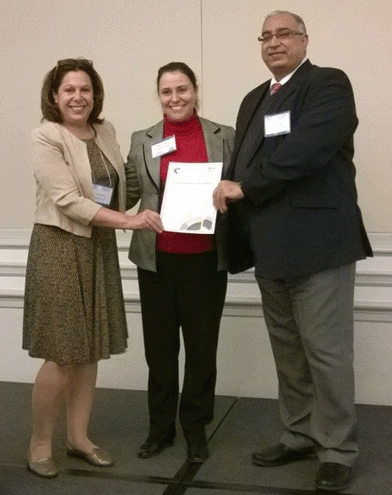Environmental Science: Nano – the first year a successful launch
Vicki H.
Grassian
Department of Chemistry, University of Iowa, Iowa City, IA 52242, USA. E-mail: vicki-grassian@uiowa.edu
After reading through all of the articles in the first volume, it is evident that Environmental Science: Nano has been successfully launched with very high quality articles being published. To a large extent this is due to the diligent work of the Associate Editors James Hutchison, Gregory Lowry, and Kristin Schirmer. The Associate Editors oversee all aspects of handling the submission and review of articles that span the areas covered by the journal to insure that Environmental Science: Nano is on the right track.
Because of the quality of the published articles in Environmental Science: Nano, I am pleased to inform our current authors, i.e. those who have published in our journal this first year, as well as future authors, that Environmental Science: Nano has been selected for coverage in Thomson Reuter's products and services. What this means is that Environmental Science: Nano publications will be indexed and abstracted in: Science Citation Index Expanded; Journal Citation Reports/Science Edition; Current Contents/Physical, Chemical and Earth Sciences; Current Contents/Agriculture, Biology and Environmental Sciences; Biological Abstracts and BIOSIS Previews. This coverage begins effective immediately with all articles published in volume one and beyond. This is indeed good news for both the journal and authors.
A few points are relevant to bring up in this first issue of the second volume. First, some comments related to the Nano Impact Statement that is required for all articles. This statement should aim to answer the following questions:
(1) What is the problem?
(2) Why is it important?
(3) What is the key finding?
(4) How can this be generalised?
(5) What is the Nano impact?
With these questions in mind, authors can better layout the importance of their work that they then describe in detail in the article.
I also want to note that besides regular article submissions, another article type is the Perspective article. Perspectives are articles that should be thought provoking and have the potential to change the direction of the field. In cases where there are two sides to the issue, perspectives should provide opposing views within the article or, in some case, two perspectives from different authors can be published to bring the debate to the forefront of the community. Perspectives are typically reviewed by at least two referees and the Associate Editors will do their best to streamline the process as much as possible so as to insure timely publication of Perspective articles.
Additionally, we have our designated Environmental Science: Nano 2014 HOT Articles (http://rsc.li/1IXhWSm). These articles are a collection of the 2014 Environmental Science: Nano articles which have been classified as ‘HOT articles’ due to receiving particularly high scores at peer review.
At the end of 2014, in recognition of our partnership with the Sustainable Nanotechnology Organization (SNO), Environmental Science: Nano sponsored the first SNO Emerging Investigator at the annual SNO meeting. The SNO Emerging Investigator gives recognition to emerging scientists and engineers working in the area of Sustainable Nanotechnology. Criteria and eligibility for this award include: (i) investigators who are at the rank of Assistant Professor without tenure are eligible to receive the award; (ii) a body of independent work and publications in the area of sustainable nanotechnology – environmental, societal, or economic and; (iii) attendance at the SNO meeting for which the award will be granted and a high quality paper submission to Environmental Science: Nano within one year after receiving the award. This year's SNO Emerging Investigator honor went to Professor Debora Rodrigues (Fig. 1). Professor Rodrigues' research is focused on carbon-based materials and covers both applications of nanomaterials for improving water quality and implications on the safety of nanomaterials.
 | ||
| Fig. 1 2014 SNO Emerging Investigator winner Debora Rodrigues (centre) with Environmental Science: Nano Editor-in-Chief Vicki Grassian (left) and Executive Editor Harp Minhas (right). | ||
In closing, I want to note that Environmental Science: Nano is truly a community journal and we appreciate your support through high quality submissions, reviews of other papers and a commitment to the sustainable development of nanoscience and nanotechnology. On behalf of the Editors and Editorial Board, I want to say thank you to the community for supporting the launch of this journal. We don't take the community for granted and I encourage anyone who has a suggestion on how to improve the journal to contact myself, Vice Editor-in-Chief Christy Haynes, the Associate Editors or any of the Editorial Board members with their suggestions and comments so that Environmental Science: Nano continues to be a high quality journal that is a must read for all working in the area of sustainable nanotechnology.
Vicki H. Grassian
F. Wendell Miller Professor, University of Iowa
Editor-in-Chief, Environmental Science: Nano
| This journal is © The Royal Society of Chemistry 2015 |
